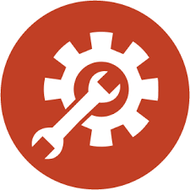How to Reduce Conveyor Maintenance Costs
Posted by Paul Kuharevicz on 2020 Nov 2nd
Reducing conveyor maintenance costs should be on the mind of every maintenance person responsible for maintaining conveyor systems at their plant. In a manufacturing environment, reducing conveyor maintenance costs on existing equipment is difficult. While a good preventative maintenance program helps reduce unexpected downtime, it doesn’t address the overall cost of the maintenance.
The total cost of maintenance includes the cost of the parts; the labor needed to make the repair; the inventory cost of stocking replacement components; and the cost of lost productivity while the conveyor isn’t in operation.
When it comes to conveyors, reducing conveyor maintenance costs is best accomplished before the conveyor is even purchased. By purchasing a conveyor that is designed to be easily and quickly maintained and serviced you will put yourself in a position to greatly reduce your overall maintenance costs.
Conveyor Motors: Conveyor motors are a high wear item for any conveyor. You want to avoid an integral (one piece) motor/gearbox that is hard wired to the control. With a one-piece motor you have to unwire the motor from the power source, remove the motor/gearbox and remove the coupler. The gearbox (which is still good) needs to get thrown out, with the motor, because they are not designed to be separated. This process will take about an hour.
With a modular motor gearbox, all you have to do is unclip the quick disconnect power cable, remove four motor screws (that connect the motor to the gearbox) and take the motor off. The grease packed gearbox and coupler will stay attached. This process will take just a few minutes.
Belting: Belt repairs are much quicker and less costly with a plastic modular link style belt when compared to a one-piece fabric or rubber belt. Typically, when a conveyor belt experiences damage, it is only to one area of the belt – not the entire belt.
When using a modular belt, only the damaged section of the belt will need to be replaced. If the conveyor uses a one-piece fabric or rubber belt you will need to replace the entire belt.
If a replacement belt is not in your maintenance inventory, the conveyor will be down until a new belt can be purchased and shipped to you. If you choose to stock extra belting, then a small section of modular belting is much less costly than stocking an entire one-piece conveyor belt.
Sidewalls: Any time a conveyor has been damaged and no longer runs, it will need to be repaired or replaced. Conveyors made of long extruded aluminum sidewalls will be costly to repair and may even need to be replaced.
Owning a conveyor built using short modular sidewalls allows you the ability to easily repair the broken conveyor by simply replacing the broken sidewalls. Repairing only the broken components on a conveyor can save you thousands of dollars.
There is a direct correlation between conveyor modularity and reducing conveyor maintenance costs. The more modularity there is with the conveyor, the easier it will be to repair. Purchasing a truly modular conveyor can reduce your overall conveyor maintenance costs by thousands of dollars.
Do your research before you purchase your next conveyor!

